Japan May travel seasonal highlights, themes and attractions
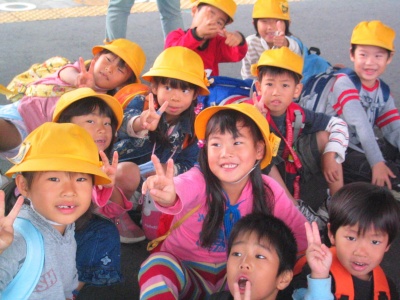
May, in my humble opinion, after 30 years in the Japan travel business, is the finest month of spring and also the last month of spring. The incredible greens of the first “wakaba” young leaves in early May is also echoed on the forest ground in new ferns, new bamboo shoots and new plants and little flowers of all kinds. In short, May is a glorious time to be traveling in Japan.
And, with the exception of Golden Week (until May 06) when certain places in Japan can become overrun by domestic Japanese tourists, May is completely different from the cherry madness days of April. The kids are in school and the next big Japanese holiday season only starts again in mid July or so. However, the early days of May are still perfect for cherry blossom experiences on the northern island of Hokkaido!
I like to call the weather in May “champagne” weather because the days are so perfectly warm and full of heightened energy. On the main island of Honshu near sea level (i.e. think Tokyo and Kyoto and Osaka) the average high temperature in May is 23 C (75 F); the average low temperature for May in these areas of Japan is 14 C (58 F).
In the Japanese tea ceremony, the month of May has been poetically captured with “goma” associations that capture the essence of each 10-day period: early May, mid May, late May. These key words and themes that have been classically repeated in Japan for more than 1,200 years. The May goma key words can help you “imagine” what to expect when you travel in Japan in that month. Early May: Kumpu early summer (based on Japan’s older lunar calendar; nowadays May is the last month of spring) breezes. Mid-May: Samidare early summer rains that last for a while. Sa Otome women/girls planting rice seedlings typically dressed in indigo blue clothing wearing a straw hat. Cho sei mountain wind on a sunny day; or the haze on top of a mountain on a sunny day. Late May: Koromo Ga-e changing of the wardrobe in preparation for “summer”. Ka no ko deer fawns. Yama Shimizu freshwater mountain springs.
May 5th is Boy’s Day, now celebrated as Children’s Day, and is full of things kids love including kites, special foods, warrior armor. Decorative paper balls are hung, and kashiwa mochi (rice cakes wrapped in oak leaves) and chimaki (rice dumplings wrapped in a leaf) are served. In the Edo period, carp became associated with strength, endurance, and persistance. During the Children's Day period carp streamers are hung hung on bamboo polls. It is the custom to fly one for each son and many traditional Japanese families still do this and non-traditional ones too.
May is without question the "purple month" in connnection with the stunning Ayame iris, or kakitsubata. The most famous place to see irises in bloom is Ohta Shrine in Kyoto. But all major cities have iris gardens, often on the grounds of old samurai estates, especially in Tokyo. They are normally in bloom by May 20th or so. Viewing irises in the rain is also a very Japanese tradition. Interestingly, the Japanese do not view rain as a negative but an opporunity to "see" nature in another light . . .
May is considered the beginning of summer according to the old lunar calendar of Japan (and China). But today, we view May as the last month of spring. However, since Japan only left the lunar calendar behind about 150 years ago, the traditional world of Japan and thus the modern Japanese worlds are still connected. May is the season for changing clothes and getting ready for the summer heat. For example, in May salarymen company workers start wearing short sleeved shirts. In traditional tatami mat households (some but not all) tatami mats are changed for new ones and the house ro or brazier is put away until autumn.
May is also the month for the picking of the first Japanese green tea leaves of the year. And the first tea leaves of the year are also the most expensive as they are used to make matcha powder tea. May is excellent for wandering through the old tea plantations west of Tokyo (Shizuoka) and south of Kyoto (Uji).
And in the early to mid May forests and gardens of Japan, especially in the early morning hours, uguisu Japanese cuckoo makes its haunting single cries.
- Japan May travel food highlights
- Japan May travel tree and flower highlights
- Japan May travel festival highlights
- Children’s Day: Kids still having fun in traditional ways
- Children’s Day or Boy’s Day May Interview
Content by Ian Martin Ropke, owner of Your Japan Private Tours (est. 1990). I have been planning, designing, and making custom Japan private tours on all five Japanese islands since the early 1990s. I work closely with Japan private tour clients and have worked for all kinds of families, companies, and individuals since 1990. Clients find me mostly via organic search, and I advertise my custom Japan private tours & travel services on www.japan-guide.com, which has the best all-Japan English content & maps in Japan! If you are going to Japan and you understand the advantages of private travel, consider my services for your next trip. And thank you for reading my content. I, Ian Martin Ropke (unique on Google Search), am also a serious nonfiction and fiction writer, a startup founder (NexussPlus.com), and a spiritual wood sculptor. Learn more!
Japan May travel food highlights
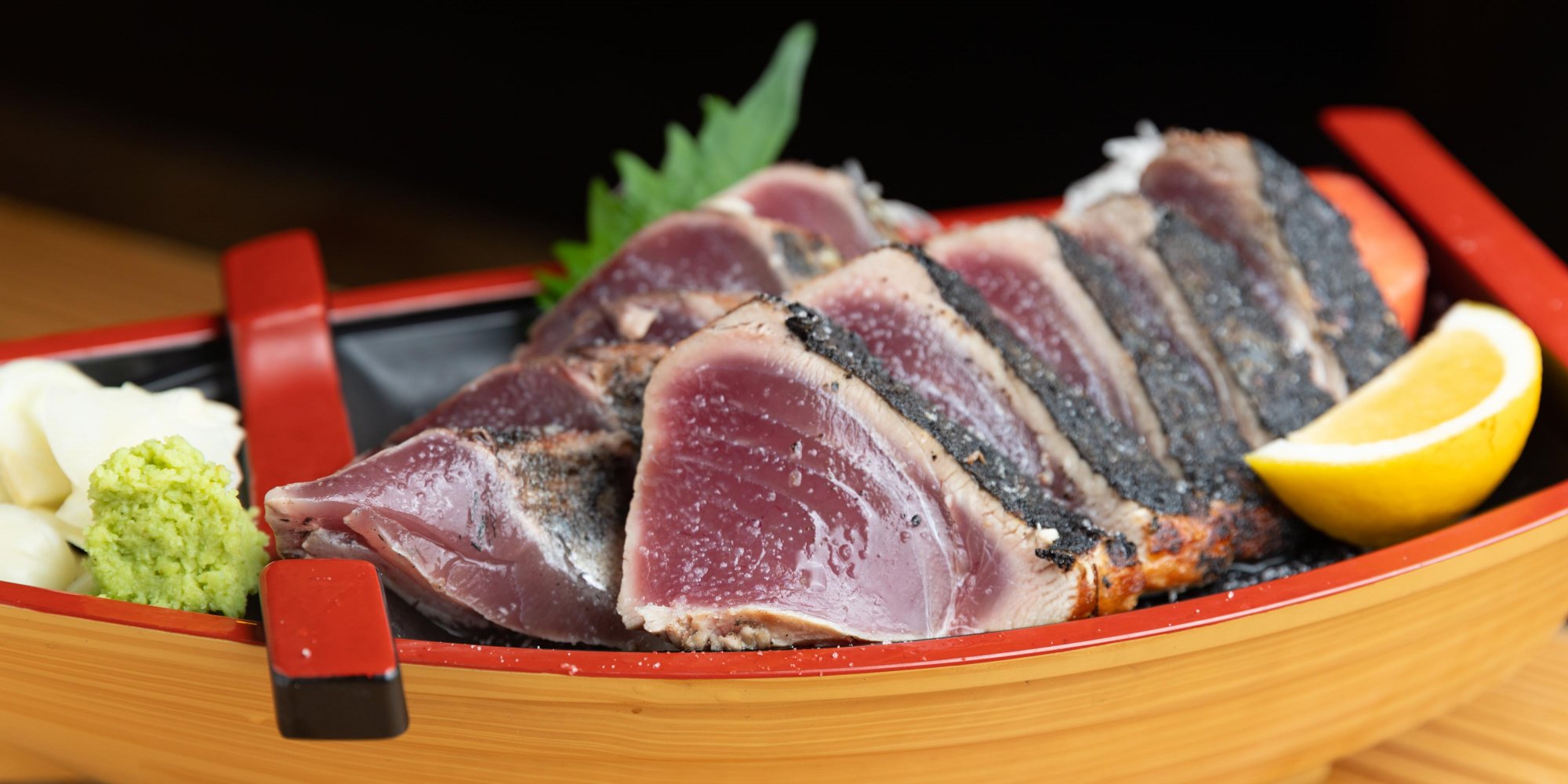
In Japanese restaurants in May look for katsuo (bonito) tuna that is served raw. Another thing to look for are sansai mountain vegetables, wild delicacies that grow in the mountains at this time of year. Common sansai mountain vegetable delicacies include warabi (bracken fern heads), zenmai (flowering fern), seri (Japanese watercress), yomogi (mugwort), kinome (the first leaves of sansho, or Japanese pepper), fuki (bog rhubarb), and last, but not least, takenoko (new bamboo shoots). Although sansai can be prepared many ways, they are usually boiled and then flavored with mustard, sesame seed, vinegar, soysauce, or sweet sake. They can also be cooked with rice, or made into a delicious tempura. The Children's Day festival of May brings with it two traditional Japanese sweets welcomed by child and adult alike. Chimaki are elongated pieces of mochi (pounded sticky rice) wrapped and steamed in the aromatic leaves of the dwarf bamboo. They usually come tied together in bundles of five. Then there's kashiwa-mochi, another variation on mochi, this time wrapped in a kind of oak leaf. It comes filled with either bean paste or sweet miso. The standard food for the Children's Day festival is chirashi-zushi scattered rice sushi: a bed of vinegar-flavored sushi rice decorated with shrimp, sashimi, green peas and then sprinkled with slivers of omelette. And if you are travelling with kids and visit Kyoto in May then, in the spirit of Children’s Day (May’s biggest ritual; used to be called Boy’s Day), don’t forget to visit the old-world candy shop called Funahashiya. Because May is also the months of kites and this shop has lots of fun kites. A father used to fly a kite each May with his son’s name written on it. But for many children the old-style candy (amazing colors, images and nostalgia), and rice crackers offer a feast for the eyes and a sweet tooth.
Japan May travel tree and flower highlights
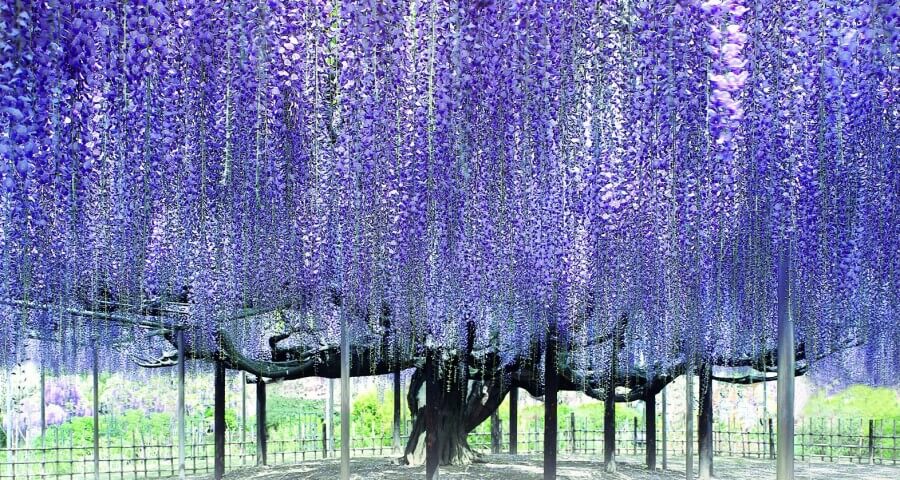
When it comes to color, May is best symbolized by incredible vivid greens and stunning purples (irises and wisteria). The first fresh green spring leaves are called wakaba in Japanese or young leaves. These can be seen as a luminous fresh glow on the mountainsides surrounding the city, a phenomena that lasts until nearly the end of the month when they gradually turn to the final darker greens of June. Enjoy! Wisteria: The mauve purple flowers of the wisteria vine (fuji), equally beloved by flower enthusiasts over the ages, are also a treat not to be missed in May. From the end of April to around the middle of May, Kyoto is the perfect place to experience the beauty of wisteria in full bloom but many traditional setting all over the country offer stunning wisteria viewing experiences. Azaleas: Azaleas, in various colors, are in abundance in late May right through to late June. Urban landscapes in Japan make use of these hardy bushes along major roads and as huge banks in both traditional and modern Japanese landscape gardens. They can be seen with ease anywhere between Tokyo and northern Kyushu but do bloom at different periods that also overlap. Irises: May is iris month in Japan. This strong pondside flower has been a favorite in Japanese gold background screens since the Muromachi period. And it continues to be celebrated in modern paintings too. Iris flowers last for quite a while and create outstanding blue visual fields that can take your breath away. There are many species of irises in Japan but the favored ones in traditional and modern landscape gardens are native Japanese water irises (hanashobu iris) and the Japanese ayame iris.. Besides inspiring countless paintings and poems, the iris is also important to medicine. After the flower has bloomed, the leaves can be cut and bundled and added to the family bath to purge the body of impurities. The flower blooms twice, so you are sure to see several hundred in bloom anytime during the month of May. Peonies: Another May motif, often seen in scrolls and paintings, is that of Chinese dogs frolicking in a flowering background of peonies. Peonies, favored for their rich reds and subtle pinks, have flowers the size of a large human hand. Nara’s Hase-dera Temple is particularly well-know for its slope of peonies but you can also experience them in Kamakura and more than a few of Tokyo's top Edo-period gardens.
- Japan May travel food highlights
- Japan May travel tree and flower highlights
- Japan May travel festival highlights
- Children’s Day: Kids still having fun in traditional ways
- Children’s Day or Boy’s Day May Interview
Japan May travel festival highlights
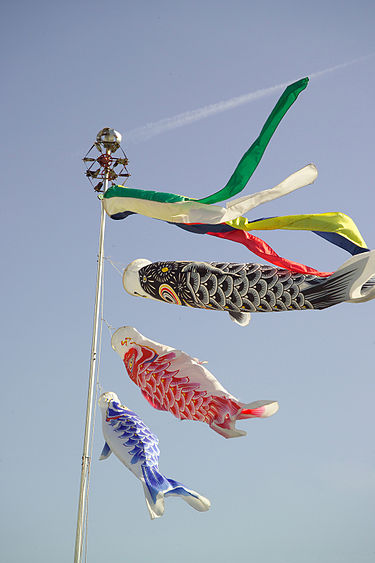
Children's Day (5/5; all over Japan): Kodomo No Hi, or Children's Day, is a day to hope for the health and happiness of children in Japan. The day was historically celebrated as Boy's Day and many of its symbols and customs are related to old samurai traditions that prepared boys for their role as warriors. Boys throughout Japan display a model samurai helmet in the weeks leading up to the holiday. Also be sure to look for the huge and colorful koi carp windsocks mounted on tall poles at traditional homes in the countryside and major cities.
Public Kyogen (5/1-4): Popularized in the late 14th century, these public (usually free) Kyogen plays are dramatized forms of medieval Buddhist parables, held at many locations throughout Japan. They feature a superb range of masks (some of which are hundreds of years old). The variety of action, simple but effective costumes, and spectacular scenes make this event a special treat not to be missed. Senbon Enma-do Kyogen (early May, various locations): Nembutsu Kyogen are medieval Buddhist parables performed in pantomime. Shinsen-en Kyogen (5/1-2, Kyoto): Kyogen from the Mibu Temple kyogen repertoire is performed in a beautiful azalea garden. Various stalls will also be doing business.
Kamogawa Odori (5/1-24): During this period only one of Kyoto’s geiko/maiko quarters stage their special, breathtakingly beautiful song and dance performances. The dances, with their richly decorated costumes and spectacular stage sets, are perfect, living examples of Kyoto-style grace and elegance; Pontocho Kaburenjo Theater. Nijo Castle Tea Party (5/3-5, Kyoto): In the castle’s vast and beautiful garden, Seiryu-en, masters of some of the top Japanese tea ceremony schools will perform in a huge tea ceremony. Ninomaru Palace, sliding door paintings by Kano School, and Ninomaru Garden are also open to the public. Arashiyama Rankyo Festival (5/9 & 10, Kyoto): Various music performances (Japanese drum, jazz, noh play, etc.) will be performed on classically designed boats on the Oi River, surrounded by beautiful mountain views. Food stalls line the river bank and traditional craftsmen show and sell their works. Kurama Full Moon Festival (Kyoto): Every year on the night of the May full moon, Kurama Temple hosts the spiritually-charged Uesaku Festival, dedicated to the Buddhist protector deity, Bishamonten. This festival, the only Himalayan-style full moon event in Japan, is highly recommended. Every year, many monks from southeast Asia journey to this location to participate. A good way to see the festival is to go to Kibune before dark, and climb to the top of the mountain to Kurama Temple, where the festival is held. The festival begins at 19:00 and ends quite late.
Mifune Matsuri Festival (5/17, Kyoto): At 14:00 on this day, thirty boats carrying imperially costumed participants move up the Oi River (in Arashiyama). In the Mifune (Three Boat) Festival, the Imperial houseboat leads the way, carrying players chanting Noh dramas and reading Chinese and Japanese poetry. Next, the Dragon Boat carries musicians playing the eerie, stately, court music, known as gagaku. The Phoenix Boat follows with several miko (shrine maidens) bearing traditional Shinto offerings. The other thirty boats feature some other art or entertainment form. Small rowboats and pedal boats can be rented from the Arashiyama bridge area, if you wish to follow the flotilla and see the beauty of the boats and the performing entourage close up.
Oharame farming flower women festival (5/15-31, in Ohara just NE of Kyoto): Ohara, 10 km northeast of downtown Kyoto, is famous for its rural charm and cultural wealth, and for its mompe (pronounced mompay) trouser-clad Oharame women, who sold firewood and vegetables from carts in the city. During this two-week festival visitors can try on their distinctive mompe clothing. Aoi Matsuri (5/15, Kyoto): A reenactment of a 6th century imperial procession in Kyoto that has been held since the 10th century. In true Kyoto style, the festival is sombre but authentic. The procession includes around 500 participants in full imperial regalia. Each year, an unmarried woman is selected to be imperial princess from thousands of applicants. She wears no less than 30 layers of kimono for the parade.
Kanda Matsuri (only held in odd years like 2021, 2023 in Tokyo): Japan's largest mikoshi festival featuring 200 teams carrying 1000 kilogram taxis of the gods. Sumo Summer Basho: One of only three professional sumo tournaments in Tokyo each year. It's a chance to see the stars of the sport in action. Ohara Matsuri (mid May, Tokyo): The Tokyo version of the matsuri of the same name in Kagoshima. The festival offers intense taiko drumming and 2000 dancers performing a traditional dance known as Ohara Bushi. It's considered a friendship festival between the two cities. Several teams from Kagoshima join. Hanging Wisteria of Ashikaga Flower Park (early to late May, Ashikaga, Tochigi, north of Tokyo): A stunning display of hanging wisteria flowers, known as fuji in Japanese. The wisteria of Ashikaga Flower Park date to 1870 and are amongst the largest in the world.
- Japan May travel food highlights
- Japan May travel tree and flower highlights
- Japan May travel festival highlights
- Children’s Day: Kids still having fun in traditional ways
- Children’s Day or Boy’s Day May Interview
Children’s Day: Kids still having fun in traditional ways
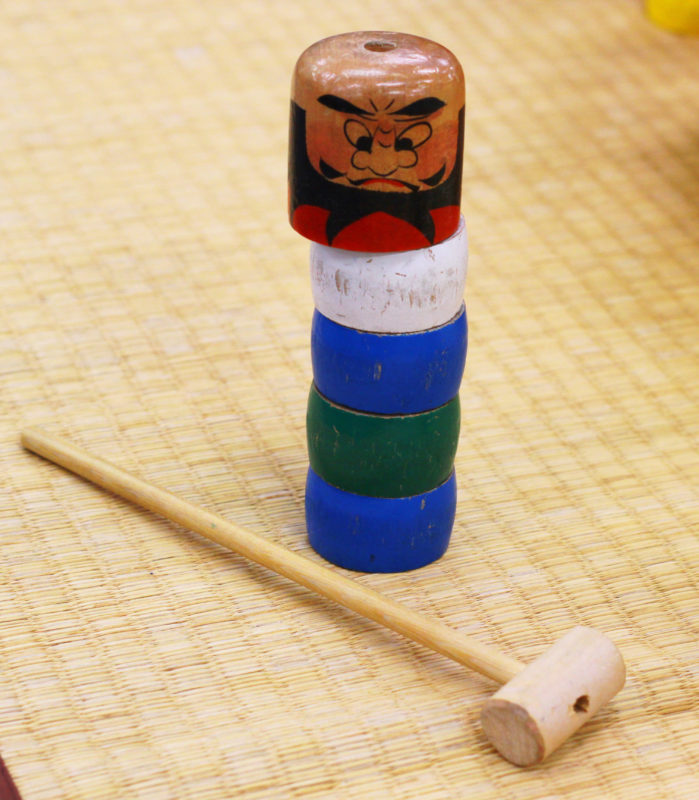
What do modern children do to have fun? In what seems to be a world-wide phenomenon the answer has become increasingly the same — they play with computers. Japanese elementary schools have started to receive basic training in personal computers and it is not difficult to imagine these children, with total computer literacy, swimming smoothly in the cyberspace of the future. With the help of correspondence and transportation development techniques, ideally, Japan’s future adults will become literally 'international' and 'intercultural.'
Kyoto, with its roots going back over 1200 years, has been a central point of focus for Japanese society & culture since ancient times and is probably the one place all foreign tourists visit. For non-Japanese, when it comes to Japanese culture, many naturally think of things like traditional theatre, art, clothing and fabrics, and gardens. However, what is should never be forgotten is, Japan’s popular, grass-roots culture.
May in general and May 3rd in particular is children’s month in Japan. Here are a few of the old traditional games and past times most Japanese children and, of course adults, are familiar with. These games and amusements are fun, maybe there’s something here that you can teach your children or friends.
Takeuma: Walking around on stilts made of bamboo trees.
Bosan ga he-o koita: One kid, the "oni (devil)," faces a wall and says "Bosan-ga he-o koita, nioi-dara kusakatta (lit. the monk farted, and it smelled bad)." Other kids behind him/her move forward as far as they can, while the phrase is read. The oni devil turns around when finishing saying it, and others have to stop their motion completely. I f anyone moves even a bit, she/he is "chained" to the oni by inter-twinning their baby fingers. When all the kids have been chained, the first chained one becomes the oni. However, when someone reaches and touches the oni before she/he finishes saying the phrase, all the chained kids are released and start running. After counting a few seconds, the oni chases them. The first one caught becomes the new oni.
Hanaichi Monme: The children divide themselves into two groups. The each of the group members of either side decide together who they want from the other group. Then, holding hands, the groups move back and forth singing, "who do you want" followed by " we want so and so." The wanted ones then play janken (stone, scissors and paper) to decide who gets who. The game is over when there is only one big group left.
Kendama: This cup, ball, stick game has been around for centuries. It’s a game for one. Doing various tricks of varying difficulty, each person tries to throw the ball (tied to the stick) in such a way that they catch it in the cup.
With Takeuma, children learn physical balance. Bosan-ga he-o koita teaches children performance skills in that they have to stay still in a strange posture for a period of time. Hanaichi Monme works to promote team spirit, but it has also been said to be rather cruel, as it often leaves the least popular kid to the last. Kendama teaches children learn how to concentrate, without them realizing it.
These days, children don't play these games as often. More and more the word “game” requires the use of eyes and fingers on some kind of computer or screen. It is a must for children to learn computer skills. However, with the efficiency they acquire using from these skills, theoretically, and so they gain added play time. With this extra time they will hopefully get together, as always, and play Takeuma and Menko — simple tools which act to enhance their imagination. Kyoto-born-and-raised children are especially lucky because they still have unlimited chances to immerse themselves in the traditional, creative world that lives all around them.
Children’s Day or Boy’s Day May Interview
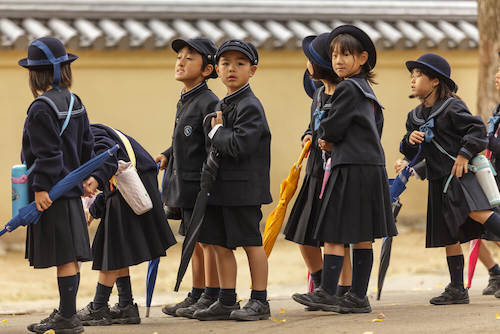
Although May 5th is officially called Children’s Day in Japan, it is actually more oriented towards young boys than girls. Girls get their share of the attention during the doll festival (Hinamatsuri) which is held annually in early March. For May’s Children’s Day huge carp streamers are flown in front of every Japanese home with young boys to express the wish that their boys will grow up healthy and vigorous like the persistent carps which swim upstream. For this Children’s Day interview, Your Japan Private Tours solicited the comments of some genki (lively!) Kyoto children on some important “kid’s topics” like holidays, playing, food, and others.
Favorite holidays?
Miki Kurata (age 10): At New Year’s, I get otoshidama. That’s a little envelope filled with money all kids get from their parents and relatives. Most of it I put in the bank, but I get to spend a little. I like to go to Print Club and take a picture with my friend. First, you go into a little booth. Then you line up your faces in the mirror and choose a frame. There’s all kinds of frames like snowflakes, pandas, flowers - and words too, like cute, thanks, cool! You get a sheet of tiny stickers that are pictures of your faces.
Rie Takioka & Myoko Ishida (age 11): In the summer we like to walk over to the festival at our neighborhood shrine. We always eat kakigori (snow cones).
Keita Takayama (age 10): Spring vacation is the holiday I most look forward to because I don’t have to do homework and I get to go fishing with my friends. Three of my good friends and I take the train to Ogoto in Shiga Prefecture to go reel fishing. For lunch we eat hot ramen from the vending machine and we stay there all day.
Playing inside or outside?
Kota Mio (age 11): When I'm inside, I like to play Nintendo. I'm only allowed to play it about 30 minutes a day because my mom says it's easy to damage your eyes looking at the screen.
Kengo Takeuchi (Age 9): Inside, I also like playing Nintendo. "64" is the most popular game right now. I've tried it and my friend's house but I don't own it - it was fun, and I am hoping I can get it too.
Yumiko (age 10): Inside I usually read books and comics, especially stories about animals like horses and dogs. Outside, I like riding my bicycle so I can go shopping for snacks, like gum. Green Gum and Black Black are my favorite kinds. I get potato chips too, the miso-flavored ones. [Green Gum is a strong mint gum, and Black Black is a licorice flavored gum popular with night-time truck drivers because it contains caffeine. Miso is a salty soybean paste frequently used in Japanese cooking.]
Keita (age 10): At home, I mainly like sleeping because I'm always so tired because I play so hard. I don't get enough sleep these days. I'm learning basketball every Tuesday. I also play tennis on Wednesdays. I've got English class on Thursday. On Fridays I go to an art studio. I don't have a special schedule on Monday after school or on Sunday. Usually on Sundays I play with my friends. I stay up until 11 or 12 o'clock. I study from 8:00, watch some TV from 9:00, take a bath around 10:00 and sometimes read in bed.
Tomoki Nakata (age 9): When we play inside I like to play kori-oni (“Ice devil”, a game like feeze tag) and taka oni. The taka-oni (“High devil”) closes his eyes and counts to 10. Everyone else runs away and has to climb up on something, and then they’re safe.
Food at home and in restaurants...?
Hiro Ameno (age 10): I like steak, fish, sashimi, fried eggs, egg rice, baked tomatoes with rice stuffed in them, and barbeques. One time at a barbeque at night we watched falling stars.
Tomoki (age 9): When we are coming home from shoppping I like to get the Okosama Lunch. It's the kid’s lunch special. You get a mound of rice with a little Japanese flag sticking up in it. You get pudding now too!
Haruna Fukui (age 10): At home, unlike most families, sometimes my dad cooks for us. He brings home yakisoba, the kind you get at convenience stores, and adds natto (sticky fermented soybeans) to it! The problem is only he eats it. I just tried a little taste of it but it was definitely to gloopy for me. I like going out too. We sometimes go to a sushi restaurnat near my English school. I can order my favorites: ikura (salmon roe) and taco (octopus) sushi rolls, and cucumber rolls too. I like almost everything on the menu at that place.
Sara Tsuzuki (age 10): At home, my mother makes really good chirashi-zushi. It’s vinegared sushi rice with all kinds of good things mixed into it like egg, nori (seaweed), kani (crab), shiso (Japanese beefsteak leaf), cucumber, sesame seeds, and those tiny jakko fish. I always seem to order zarusoba when I go out to eat. It’s cold noodles and sauce that we can only eat when the weather is nice and hot.
Yumiko: I like it when my mother makes saba, which is a kind of fish. We eat this like every Japanese family, with rice, salad, and other vegetables my mother knows how to make. For special occasions like birthdays and stuff when we go out to eat, I always hope we go to the Biifu-ya. That's the steak house!
When I grow up, I want to be ?
Haruna: I want to be a songwriter because I'm interested in how they write the words to the songs I listen to. I like pop music like Namie Amuro and Speed. Amuro is really popular right now, she's from Okinawa. Some girls want to be like her really badly but I just like her songs.
Keita: I want to be many things when I grow up. I used to always say that I wanted to become a famous manga (Japanese cartoon) artist but I don’t feel I am good enough at writing the stories to go along with my drawings. My friend, who is good at stories, and I tried to make a manga together but it just seemed like too much work. These days I am dreaming of becoming a professional basketball player, like my favorite athlete, Michael Jordan. He’s so cool! I can watch him on TV broadcast from America.
Things that scare you . . .?
Yumiko: Earthquakes scare me. Everyone still remembers the Kobe jishin (earthquake) very clearly. And, I sometimes worry that maybe we won't have enough money to pay for our house, and a yakuza (Japanese mafia) will appear at the door - I've heard about that kind of thing really happening to people who can't pay their bills.
Parents words to you . . .?
Taishi Kurokawa: “Massage my shoulders.”
Yumiko: "Use your time wisely!"
Kota: "Do your homework - do your studies!"
Keita: "Turn off the TV!"
Japan month by month private travel & culture summary index
Japan spring travel: Mar, April, May. Learn more!
Japan summer travel: June, July, August. Learn more!
Japan autumn travel: Sept, Oct, Nov. Learn more!
Japan winter travel: Dec, Jan, Feb. Learn more!
Content by Ian Martin Ropke, owner of Your Japan Private Tours (est. 1990). I have been planning, designing, and making custom Japan private tours on all five Japanese islands since the early 1990s. I work closely with Japan private tour clients and have worked for all kinds of families, companies, and individuals since 1990. Clients find me mostly via organic search, and I advertise my custom Japan private tours & travel services on www.japan-guide.com, which has the best all-Japan English content & maps in Japan! If you are going to Japan and you understand the advantages of private travel, consider my services for your next trip. And thank you for reading my content. I, Ian Martin Ropke (unique on Google Search), am also a serious nonfiction and fiction writer, a startup founder (NexussPlus.com), and a spiritual wood sculptor. Learn more!